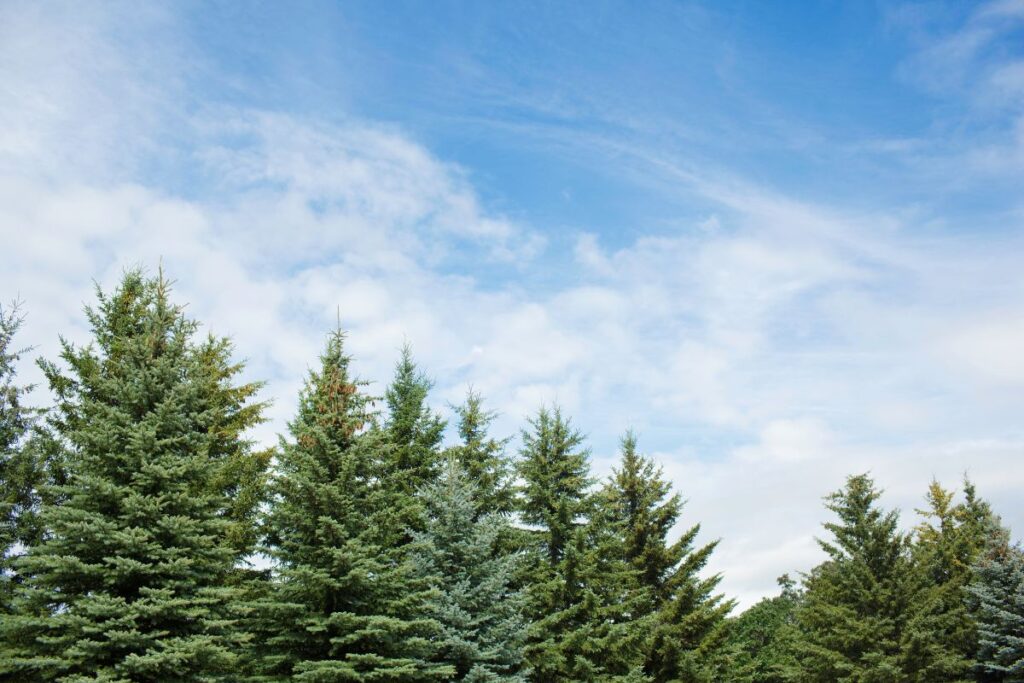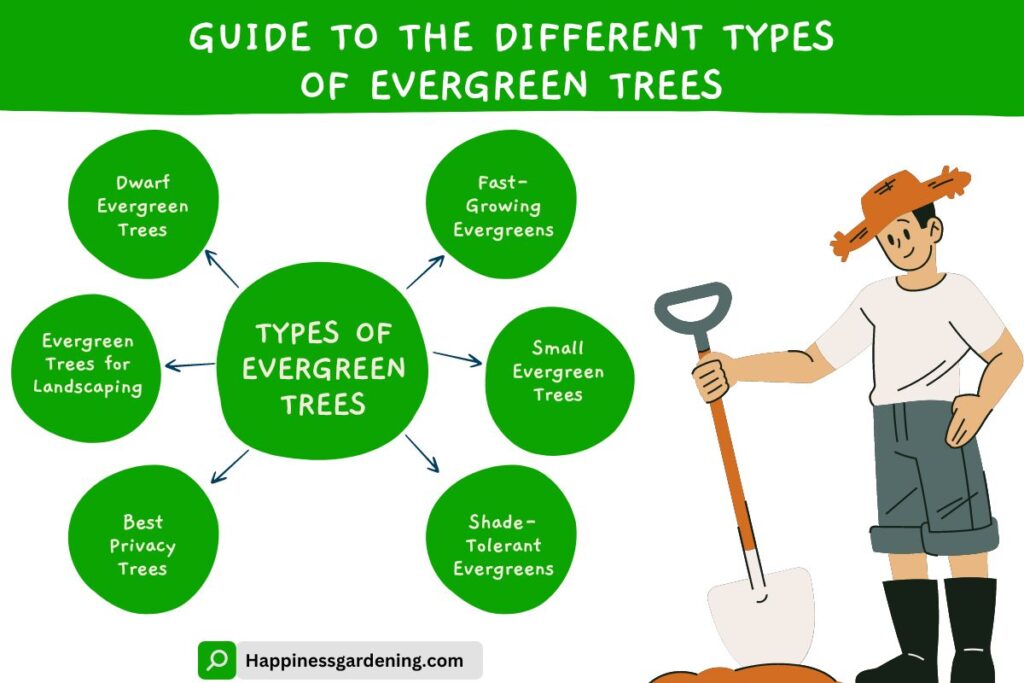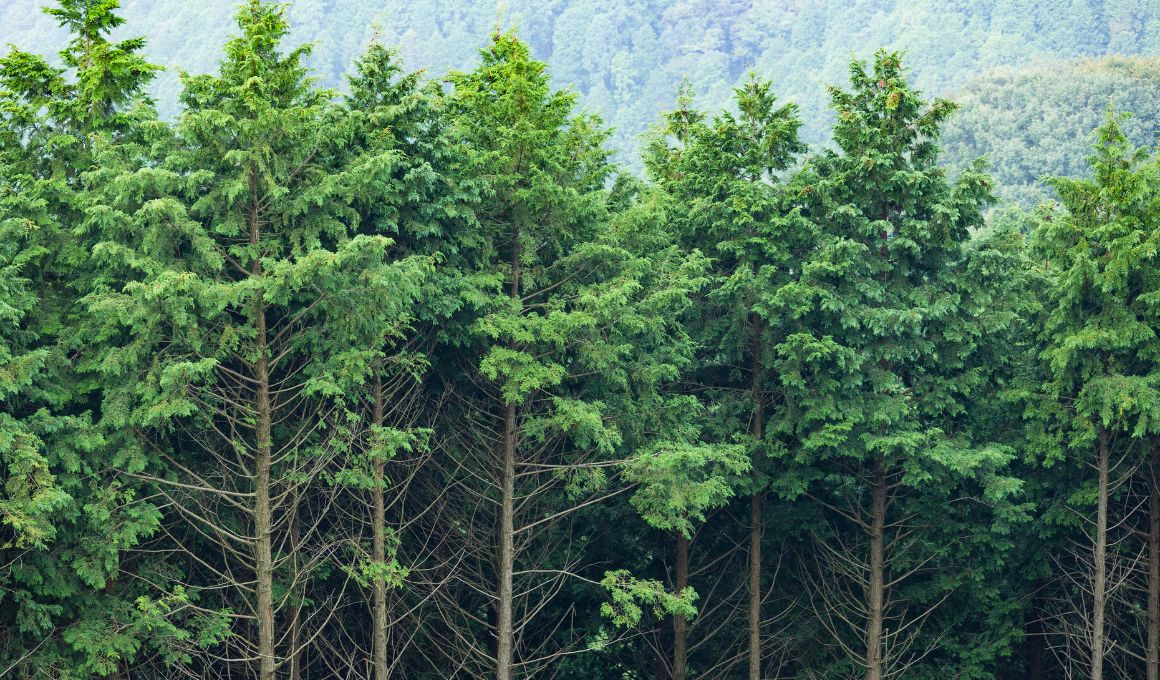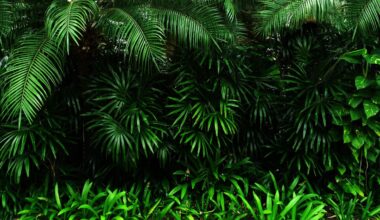Evergreen trees are a beautiful addition to any landscape, providing year-round greenery and adding charm and elegance to gardens. With their ability to retain their foliage throughout the year, these trees are a popular choice for homeowners and landscapers alike.
In this comprehensive guide, we will explore various types of evergreen trees, including dwarf evergreens, fast-growing evergreens, privacy trees, shade-tolerant evergreens, small evergreen trees, evergreens for landscaping, winter-hardy evergreens, blue evergreen trees, drought-tolerant evergreens, and evergreen trees for screening.
Whether you’re looking for information or commercial purposes, this guide will provide you with valuable insights and expert tips on selecting, planting, and caring for these beautiful trees.
What are Evergreen Trees?
Evergreen trees are a type of tree species that maintain their green foliage throughout the year. Unlike deciduous trees that lose their leaves during winter, evergreens retain their leaves or needles. This characteristic allows them to photosynthesize and survive year-round, even in cold climates.

Characteristics of Evergreen Trees
Evergreen trees are typically coniferous, which means they bear cones and have needle-shaped leaves. However, broadleaf evergreens are also common, such as the live oak or tamarind tree.
Evergreens come in different shapes and sizes, from small shrubs to large trees that can reach up to 15 feet or more in height. Their thick foliage also makes them great for privacy screens.
How Do Evergreen Trees Survive Year-Round?
Evergreen trees are able to adapt to different climates and survive year-round due to their ability to photosynthesize through their green needles.
They are also able to conserve water through their needles or leaves, which reduces their moisture loss during dry winter months. This feature makes them a great choice for landscaping in areas with limited water availability.
Evergreen Tree Identification
- Evergreen trees can be identified by their foliage, which remains green and does not shed seasonally like deciduous trees.
- Look for trees with needle-like or scale-like leaves as a common characteristic of many evergreen species.
- Some evergreen trees, like pine and spruce, have needles that are bundled together in clusters, while others, like cypress and cedar, have scale-like leaves that overlap.
- Evergreen trees also often have cones, which are reproductive structures that contain seeds. The size, shape, and color of the cones can vary between different evergreen species.
- Pay attention to the overall shape and growth habit of the tree, as evergreens can range from tall and columnar to compact and spreading.
- Identifying evergreen trees can be a fun and rewarding activity, and by familiarizing yourself with their distinct characteristics, you can better appreciate the diversity of these beautiful trees.
What Are Growing Conditions Required for Evergreen Trees?

Here are some growing requirements for evergreen trees.
- Sunlight: Most evergreen trees prefer full sun to partial shade, although some species can tolerate shade to varying degrees.
- Soil: Evergreen trees generally thrive in well-drained soil that is rich in organic matter. However, specific soil preferences can vary depending on the species.
- Moisture: While evergreen trees are often associated with drought tolerance, newly planted trees typically require regular watering until they establish a strong root system. Once established, many evergreens can tolerate dry conditions.
- Climate: Evergreen trees have different hardiness zones, and it’s important to choose species that are suitable for your specific climate. Some evergreens thrive in colder regions, while others are better suited for warmer climates.
- pH Levels: Soil pH can also affect the growth and health of evergreen trees. It’s essential to understand the preferred pH range of the specific species you’re planting.
- Pruning: Evergreen trees generally require minimal pruning, but occasional trimming may be necessary to maintain their shape, remove dead branches, or control their size.
- Mulching: Applying a layer of organic mulch around the base of the tree can help retain moisture, regulate soil temperature, and suppress weed growth.
Understanding the growing conditions required for evergreen trees is crucial for their successful establishment and long-term health. By providing the right conditions, you can ensure that your evergreen trees thrive and contribute to the beauty of your landscape.
Related Reading:
- Discovering the Majesty of Tropical Plants: A Guide to Growing Tropical Plants and Care
- Snake Plant – A Growing, Types, Benefits Guide
- How to Get Started with Gardening?
- An Overview of Cucurbitaceae Family
Types of Evergreen Trees

There are different types of evergreen trees, each with its own unique characteristics and benefits. Here are some of the most common types of evergreen trees:
Dwarf Evergreen Trees
Dwarf evergreen trees offer a compact and charming addition to any garden. Despite their small size, these trees exhibit all the characteristics of their larger counterparts.
Here’s a table of Dwarf Evergreen Trees:
| Evergreen Trees | Scientific Name | Growing Zone | Description |
| Dwarf Alberta Spruce | Picea glauca ‘Conica’ | Zones 2-6 | Compact conical shape with dense, bright green foliage. Ideal for small gardens. |
| Hinoki Cypress Nana Gracilis | Chamaecyparis obtusa ‘Nana’ | Zones 5-8 | Slow-growing, compact, and has graceful, feathery foliage. Perfect for rock gardens. |
| Japanese Umbrella Pine | Sciadopitys verticillata | Zones 5-8 | Unique umbrella-like foliage arrangement, slow-growing, and has a pyramidal shape. |
They are perfect for small gardens, containers, or as focal points in landscaping. Popular varieties of dwarf evergreen trees include the Dwarf Alberta Spruce, Hinoki Cypress Nana Gracilis, and the Japanese Umbrella Pine.
Fast-Growing Evergreens
If you desire a quick transformation for your landscape, fast-growing evergreens are an excellent choice. These trees can quickly provide privacy, shade, and aesthetic appeal.
Here’s the table for Fast-Growing Evergreen Trees:
| Evergreen Trees | Scientific Name | Growing Zone | Description |
| Leyland Cypress | x Cupressocyparis leylandii | Zones 6-10 | Rapid growth rate, tall and dense, used for privacy screens and windbreaks. |
| Green Giant Arborvitae | Thuja plicata ‘Green Giant’ | Zones 5-7 | Vigorous growth, tall and narrow, excellent for privacy screens and as a windbreak. |
| Eastern White Pine | Pinus strobus | Zones 3-8 | Fast-growing and can reach significant heights, commonly used for reforestation and as ornamental trees in landscapes. |
Some advantages of fast-growing evergreens include their ability to fill in gaps in the landscape, provide windbreaks, and screen undesirable views. Popular fast-growing evergreen species include the Leyland Cypress, Green Giant Arborvitae, and Eastern White Pine.
Best Privacy Trees
Privacy trees are essential for creating a tranquil and secluded space in your outdoor area. These trees not only offer privacy but also serve as windbreaks and noise barriers.
Here’s the table for Best Privacy Trees:
| Evergreen Trees | Scientific Name | Growing Zone | Description |
| Emerald Green Arborvitae | Thuja occidentalis ‘Smaragd’ | Zones 2-7 | Dense foliage, maintains its vibrant green color year-round, and is commonly used as a living privacy fence. |
| Leyland Cypress | x Cupressocyparis leylandii | Zones 6-10 | It is fast-growing, tall, and dense, making it an excellent choice for creating privacy screens and windbreaks. |
| American Holly | Ilex opaca | Zones 5-9 | Evergreen trees with glossy green leaves and red berries, provides both privacy and ornamental value to the landscape. |
Common options for privacy trees include the Emerald Green Arborvitae, Leyland Cypress, and American Holly. It’s important to consider factors such as height, density, and growth rate when selecting privacy trees for your specific needs.
Shade-Tolerant Evergreens
If your garden has shaded areas, shade-tolerant evergreens are the perfect choice to bring greenery to these spots. These trees can thrive in low-light conditions and add life to areas that may otherwise be challenging to cultivate.
Here’s the table for Best Privacy Trees:
| Evergreen Trees | Scientific Name | Growing Zone | Description |
| Emerald Green Arborvitae | Thuja occidentalis ‘Smaragd’ | Zones 2-7 | Dense foliage, maintains its vibrant green color year-round, and is commonly used as a living privacy fence. |
| Leyland Cypress | x Cupressocyparis leylandii | Zones 6-10 | Fast-growing, tall, and dense, making it an excellent choice for creating privacy screens and windbreaks. |
| American Holly | Ilex opaca | Zones 5-9 | Evergreen with glossy green leaves and red berries, provides both privacy and ornamental value to the landscape. |
Recommended shade-tolerant evergreen varieties include the Yew, Mountain Hemlock, and Pacific Wax Myrtle. When planting and maintaining these trees, it’s important to provide adequate soil preparation and regular watering.
Small Evergreen Trees
Small evergreen trees are delightful additions to any garden, especially in smaller spaces. They offer a touch of charm, elegance, and a sense of scale to the landscape.
Here’s the table for Small Evergreen Trees:
| Evergreen Trees | Scientific Name | Growing Zone | Description |
| Japanese Maple | Acer palmatum | Zones 5-8 | Small, ornamental tree with vibrant foliage in various colors and delicate, lacy leaves. Ideal for small gardens. |
| Dwarf Hinoki Cypress | Chamaecyparis obtusa ‘Nana’ | Zones 4-8 | Compact and slow-growing, with dense, dark green foliage that adds a touch of elegance to small gardens or containers. |
| Weeping Norway Spruce | Picea abies ‘Pendula’ | Zones 3-7 | Graceful, weeping branches and short, blue-green needles make it a stunning addition to small gardens or rockeries. |
Some attractive small evergreen tree options include the Japanese Maple, Dwarf Hinoki Cypress, and Weeping Norway Spruce. These trees can be used as focal points, foundation plantings, or to create borders and boundaries in the garden.
Evergreen Trees for Landscaping
Evergreen trees play a crucial role in enhancing landscapes, providing structure and year-round interest. When selecting evergreens for landscaping, consider their growth habit, foliage color, and size.
Here’s the table for Evergreen Trees for Landscaping:
| Evergreen Trees | Scientific Name | Growing Zone | Description |
| Colorado Blue Spruce | Picea pungens | Zones 2-7 | Iconic evergreen with silver-blue needles, adds a striking focal point to landscapes and is ideal for windbreaks. |
| Southern Magnolia | Magnolia grandiflora | Zones 7-9 | Large, glossy leaves and fragrant, showy flowers make it a popular choice for adding elegance and beauty to landscapes. |
| Japanese Black Pine | Pinus thunbergii | Zones 5-8 | Distinctive, twisted branches and dark green needles create a unique aesthetic and lend a sense of character to landscapes. |
Common choices for landscaping with evergreen trees include the Colorado Blue Spruce, Norway Spruce, and Douglas Fir. Ensure proper planting techniques, regular watering, and periodic pruning to maintain the desired shape and health of these trees.
Winter-Hardy Evergreens
Winter-hardy evergreens are specially adapted to thrive in cold climates, adding beauty and interest to winter landscapes. These trees are resilient and can withstand harsh weather conditions.
Here’s the table for Winter-Hardy Evergreen Trees:
| Evergreen Trees | Scientific Name | Growing Zone | Description |
| Norway Spruce | Picea abies | Zones 2-7 | Large evergreen tree with dense foliage and excellent cold hardiness, commonly used for windbreaks and creating a winter landscape. |
| Canadian Hemlock | Tsuga canadensis | Zones 3-7 | Cold-hardy and adaptable, featuring soft, feathery foliage and a graceful, pyramidal shape. |
| Siberian Cypress | Microbiota decussata | Zones 3-7 | Low-growing evergreen shrub with fine, scale-like foliage that turns bronze in winter, adding color to the winter landscape. |
Recommended winter-hardy evergreen varieties include the Canadian Hemlock, Colorado Blue Spruce, and Balsam Fir. To ensure their survival, protect these trees from strong winds, provide winter watering when necessary, and apply mulch around the base to insulate the roots.
Blue Evergreen Trees
Blue evergreen trees bring a captivating charm to any garden with their unique foliage color. These trees act as focal points, creating a stunning visual contrast against greenery or other plantings.
Here’s the table for Blue Evergreen Trees:
| Evergreen Trees | Scientific Name | Growing Zone | Description |
| Blue Atlas Cedar | Cedrus atlantica | Zones 6-9 | Majestic tree with silver-blue needles that create a stunning visual impact and can grow to impressive heights. |
| Blue Spruce | Picea pungens | Zones 2-7 | Iconic blue-colored needles, ranging from silver-blue to intense blue hues, making it a standout tree in any landscape. |
| Blue Ice Arizona Cypress | Cupressus arizonica ‘Blue Ice’ | Zones 7-9 | Compact evergreen with silvery-blue foliage that retains its color year-round, adding a touch of elegance to any garden setting. |
Popular species with blue foliage include the Blue Atlas Cedar, Blue Spruce, and Blue Ice Arizona Cypress. Incorporate them into your garden design by planting them as standalone specimens or as a backdrop to complement other plants.
Drought-Tolerant Evergreens
In regions with dry climates, drought-tolerant evergreens are a perfect choice to create an oasis while conserving water. These trees are adapted to survive with minimal water requirements and can thrive in challenging conditions.
Here’s the table for Drought-Tolerant Evergreen Trees:
| Evergreen Trees | Scientific Name | Growing Zone | Description |
| Italian Cypress | Cupressus sempervirens | Zones 7-11 | Tall, slender evergreen with dense, dark green foliage, known for its drought tolerance and elegant vertical growth habit. |
| Texas Mountain Laurel | Sophora secundiflora | Zones 7-11 | Small tree with glossy, dark green leaves and fragrant purple flowers, highly drought-tolerant and ideal for arid landscapes. |
| Olive Tree | Olea europaea | Zones 8-11 | Small to medium-sized tree with silvery-green leaves and edible fruit, well-adapted to dry conditions and Mediterranean climates. |
Recommended drought-tolerant evergreen species include the Mediterranean Cypress, Juniper, and Pine. Proper soil preparation, mulching, and efficient watering practices will help these trees establish and maintain their health.
Evergreen Trees for Screening
Evergreen trees are excellent choices for creating natural screens, providing privacy, and blocking unwanted views. When selecting trees for screening purposes, consider factors such as height, density, and growth rate.
Here’s the table for Evergreen Trees for Screening:
| Evergreen Trees | Scientific Name | Growing Zone | Description |
| Leyland Cypress | x Cupressocyparis leylandii | Zones 6-10 | Fast-growing and tall, it forms a dense, thick screen that provides excellent privacy and noise reduction in a relatively short time. |
| Eastern Red Cedar | Juniperus virginiana | Zones 2-9 | Durable and adaptable, it grows in various soil types, provides year-round screening, and attracts wildlife with its berries. |
| American Arborvitae | Thuja occidentalis | Zones 2-7 | Dense foliage and a narrow, pyramidal shape make it a popular choice for creating privacy screens and windbreaks in residential areas. |
Popular evergreen varieties for screening include Leyland Cypress, Eastern Red Cedar, and Green Giant Arborvitae. Proper spacing and regular pruning will help maintain the desired height and shape for an effective screen.
Important Facts about Evergreen Trees

Identifying evergreen trees can be challenging since there are several species of evergreen trees. However, some common identifying features include their green foliage, cone-bearing (in coniferous evergreen trees), and needle-like leaves.
Here are some important facts about Evergreen Trees:
- Evergreen trees retain their foliage and remain green throughout the year, even in winter.
- They are known for providing year-round beauty and a sense of permanence to landscapes.
- Evergreen trees play a vital role in providing shade, privacy, windbreaks, and habitat for wildlife.
- These trees are generally low-maintenance and require less pruning compared to deciduous trees.
- Evergreen trees come in a wide variety of sizes, shapes, and colors, offering numerous options for landscaping and garden designs.
- Many evergreen trees are drought-tolerant and can survive in dry conditions, making them suitable for arid regions.
- Some evergreen trees, such as pine and spruce, produce cones that contain seeds.
- Evergreen trees are often used as focal points, screening barriers, or background plantings in gardens and landscapes.
- They are valued for their ability to withstand harsh weather conditions, including snow, ice, and strong winds.
- Evergreen trees provide shelter and food for birds and other wildlife, making them important for biodiversity conservation.
Remember that the specific characteristics and requirements of evergreen trees can vary depending on the species, so it’s essential to research and select the right trees for your specific climate and landscaping goals.
Related Reading:
- Controlling Cucumber Anthracnose: Tips and Strategies
- Growing Zucchini And Tomatoes Together Companion Planting
- Little Finger Eggplant: Growing Tips, Care, and Recipes
- Unleashing Joy: Exploring the Delightful World of Jolly Pumpkins
- Why Carrots And Radish Are Better Off Without Transplanting?
- How to germinate Tomato from Seeds faster?
Difference between Deciduous and Evergreen Trees
Deciduous trees are a type of tree species that lose their leaves during winter. They are able to survive year-round due to their ability to enter a state of dormancy during winter, where their metabolic activity slows down and they conserve energy.
Growing Zones for Deciduous and Evergreen Trees
Deciduous and evergreen trees have different growing zones. Deciduous trees are typically found in distinct seasons and colder temperatures, while evergreens are found in milder climates.
Pruning Tips for Deciduous and Evergreen Trees
Pruning is an important step in maintaining the health and shape of trees. Evergreens should be pruned in early spring before new growth appears, while deciduous trees should be pruned in late fall or winter after the leaves have fallen. Both types of trees should be pruned with a sharp, clean tool taking into consideration the tree’s growth habits and shape.
Frequently Asked Questions about Evergreen Trees
Here are some faqs about types of evergreen trees.
What are the different types of evergreen trees?
Some of the common types of evergreen trees are spruce, fir, cypress, blue spruce, eastern white pine, conifer, live oak, and yew tree.
Can broadleaf trees be evergreen?
Yes, there are some broadleaf evergreen trees such as the mahogany, eucalyptus, and holly that are able to retain their leaves throughout the year.
How tall do evergreen trees grow?
The height of evergreen trees can vary greatly depending on the species and growing conditions. Some can grow up to 150 feet tall, while others are small or medium-sized trees that can grow up to 15 feet tall.
What are some popular evergreen trees in the world?
Some of the popular evergreen trees in the world include the pine tree, Douglas fir, and the Colorado blue spruce.
Can evergreen trees be used for landscaping?
Yes, evergreen trees are popular choices for landscaping as they provide year-round greenery and can also act as windbreaks or privacy screens.
Are all conifer trees evergreen?
Yes, all conifer trees are evergreen. They are characterized by their needle-like or scale-like leaves and cone-bearing structures.
Do evergreen trees lose their needles or leaves?
Some evergreen trees may lose their needles or leaves as they age, but not all species are susceptible to this phenomenon.
Can evergreen plants be both small and tall?
Yes, evergreen plants can range from small shrubs to tall trees, depending on the species and growing conditions.


